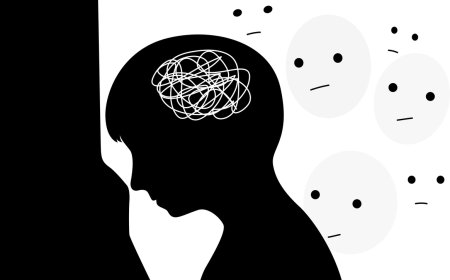Understanding the Differences Between Scientific Theories and Laws
Science Demystified: Theory vs. Law. Unravel the differences between scientific theory and scientific law, explore scientific evidence and theories, and grasp a deeper understanding of scientific terminology and their implications in real-life contexts

Scientific theories and laws are integral to our understanding of the world. Yet, their differences can often be confusing. By breaking down these complex concepts into simpler terms, we aim to make these intricate ideas accessible to all.
Scientific Theories: Unraveling the Truth
When we talk about theories in everyday life, we often refer to assumptions or speculations. However, in science, the term "theory" bears a far more robust meaning. A scientific theory is an explanation based on a wide range of observations and experimental results. These theories help describe and predict natural phenomena.
Think of a scientific theory as a comprehensive storybook. This book provides a detailed description of various natural phenomena, backed by numerous chapters of scientific evidence. From the Theory of Evolution to the Theory of Relativity, these well-substantiated explanations have withstood rigorous testing and are accepted by the scientific community.
Scientific Laws: The Framework of Nature
Scientific laws, on the other hand, are statements that describe observed patterns in nature. They don't explain why something happens but instead provide a clear, concise formula for what happens under certain conditions.
Imagine a scientific law as a rulebook. This book lays out the fundamental principles that govern the universe. Laws like Newton's Laws of Motion or the Law of Conservation of Energy consistently predict natural phenomena. However, they don't delve into the 'why' behind these phenomena.
Scientific Law and Theory in Action: A Closer Look
Let's explore the Law of Gravity and the Theory of Evolution, two iconic examples in the world of science.
The Law of Gravity, proposed by Sir Isaac Newton, is an excellent example of a scientific law. This law describes the force of attraction between two objects, which depends on their masses and the distance between them. It is a universal law, meaning it applies everywhere in the universe. This law doesn't explain why gravity works; it simply provides a mathematical formula to calculate the gravitational force. It tells us that if we drop an object, it will fall to the ground, but it doesn't explain why the object falls.
On the other hand, the Theory of Evolution, primarily attributed to Charles Darwin, is a robust scientific theory. It is an explanation for the diversity of species and how they have changed over time. The theory posits that all species are related and gradually change over generations. These changes result from a process called natural selection, where traits that help an organism survive and reproduce are more likely to be passed on to the next generation. This theory is supported by a wide range of evidence, from the fossil record to genetic data.
In essence, the Law of Gravity describes the 'what' — the force of attraction between objects, while the Theory of Evolution explains the 'why' — why there's a vast array of life forms and how they evolved over time. Both illustrate the crucial roles of scientific laws and theories in expanding our understanding of the universe.
Theory vs. Law: A Delicate Balance
So, how does a theory differ from a law? Simply put, theories explain, and laws describe. A scientific theory explains why certain phenomena occur, based on evidence collected through observation and experimentation. In contrast, a scientific law describes the consistent behavior of natural phenomena, often summarized in mathematical formulas.
Although distinct, both theories and laws are interwoven in the fabric of scientific understanding. They represent different types of knowledge but are equally important in shaping our understanding of the universe. Remember, in science, a theory never becomes a law. They coexist, playing their unique roles in describing the fascinating world of science.
The 20 Most Important Scientific Laws
Scientific laws help us understand the workings of the universe. They're found across various disciplines, from physics to chemistry and beyond. Here's a list of twenty of the most important scientific laws:
-
Newton's First Law of Motion (Law of Inertia): An object at rest stays at rest, and an object in motion stays in motion with the same speed and in the same direction unless acted upon by an external force.
-
Newton's Second Law of Motion (Law of Acceleration): The acceleration of an object is directly proportional to the net force acting on it and inversely proportional to its mass.
-
Newton's Third Law of Motion (Law of Action and Reaction): For every action, there is an equal and opposite reaction.
-
Law of Universal Gravitation: Every particle of matter in the universe attracts every other particle with a force directly proportional to the product of their masses and inversely proportional to the square of the distance between their centers.
-
First Law of Thermodynamics (Law of Energy Conservation): Energy cannot be created or destroyed, only transformed from one form into another.
-
Second Law of Thermodynamics: In any closed system, the total entropy (disorder) will either remain constant or increase.
-
Third Law of Thermodynamics: The entropy of a perfect crystal at absolute zero is exactly equal to zero.
-
Archimedes' Principle: A body immersed in a fluid experiences a buoyant force equal to the weight of the fluid displaced by the body.
-
Ohm's Law: The current through a conductor between two points is directly proportional to the voltage across the two points.
-
Faraday's Law of Electromagnetic Induction: The induced electromotive force in any closed circuit is equal to the negative of the time rate of change of the magnetic flux enclosed by the circuit.
-
Maxwell's Equations: A set of four fundamental laws that describe how electric charges and currents produce electric and magnetic fields.
-
Coulomb's Law: The force between two charged particles is directly proportional to the product of their charges and inversely proportional to the square of the distance between them.
-
Kepler's Laws of Planetary Motion: Three laws that describe the motion of planets around the Sun.
-
Boyle's Law: The pressure and volume of a gas have an inverse relationship when temperature is held constant.
-
Charles's Law: The volume of a given mass of gas is directly proportional to its temperature on the absolute temperature scale if pressure is kept constant.
-
Avogadro's Law: Equal volumes of all gases, at the same temperature and pressure, have the same number of molecules.
-
Hooke's Law: The force needed to extend or compress a spring by some distance is proportional to that distance.
-
Bernoulli's Principle: An increase in the speed of a fluid occurs simultaneously with a decrease in pressure or a decrease in the fluid's potential energy.
-
Heisenberg's Uncertainty Principle: It's impossible to accurately measure both the position and momentum of a quantum particle at the same time.
-
Einstein's Theory of General Relativity: A law explaining that gravity is the result of the curvature of space-time by matter, predicting black holes, gravitational waves, and advancing the Standard Model of cosmology.
The 20 Most Important Scientific Laws
Scientific theories are well-substantiated explanations of some aspect of the natural world, based on empirical evidence that has been repeatedly confirmed through experimentation and observation. Here are 20 of the most important scientific theories:
-
Theory of Evolution: A process that results in heritable changes in a population spread over many generations, leading to biodiversity.
-
Theory of General Relativity: Describes gravity as a geometric property of space and time, or spacetime.
-
Theory of Special Relativity: Describes how the laws of physics work at high speeds, introducing the concept that space and time are intertwined as spacetime.
-
Quantum Theory (Quantum Mechanics): Describes the bizarre behaviors of photons, electrons, and other particles that make up the universe at the atomic and subatomic level.
-
Big Bang Theory: Explains how the universe expanded from an extremely dense and hot state about 13.8 billion years ago.
-
Plate Tectonics Theory: Describes the large-scale motions of the Earth's lithosphere.
-
Atomic Theory: The idea that matter is made up of discrete units called atoms.
-
Cell Theory: States that all living organisms are composed of cells, the basic unit of life.
-
Germ Theory of Disease: Proposes that microorganisms are the cause of many diseases.
-
Theory of Electromagnetism: Combines electricity and magnetism into a single phenomenon caused by the movement of charges.
-
Inflation Theory: An extension of the Big Bang theory, proposing that the universe underwent a rapid expansion before settling into the Big Bang's more steady expansion.
-
Molecular Theory: All matter consists of molecules – small groups of atoms bonded together.
-
String Theory: Proposes that fundamental particles may be one-dimensional "strings" rather than point-like.
-
Chaos Theory: Studies the behavior of dynamical systems that are highly sensitive to initial conditions, leading to the "butterfly effect."
-
Game Theory: A mathematical framework designed for understanding behavior in strategic situations where an individual's success depends on the choices of others.
-
Theory of Natural Selection: A key mechanism of evolution, stating that organisms best adapted to their environment tend to survive and pass on their genetic traits.
-
Cognitive Dissonance Theory: Suggests that we have an inner drive to hold all our attitudes and behavior in harmony and avoid disharmony (or dissonance).
-
Heliocentric Theory: The idea that the sun is the center of the solar system, with the planets orbiting around it.
-
Neuronal Theory (Neuron Doctrine): The concept that the nervous system is made up of discrete individual cells.
-
Stellar Nucleosynthesis Theory: Predicts that large amounts of new atomic nuclei are created by nuclear reactions within stars and supernova.
The Role of Scientific Evidence
Scientific evidence plays a pivotal role in developing both scientific theories and laws. It is the backbone that supports and validates them. Whether it's data from a lab experiment or observations of a solar eclipse, this evidence forms the foundation for scientific knowledge.
Science is an evolving field, where new evidence can refine existing theories or laws or even give rise to new ones. For example, Einstein's Theory of General Relativity, which provides a new explanation for gravity, emerged from inconsistencies in Newton's Law of Universal Gravitation.
In summary, both scientific theories and laws hold immense significance in our understanding of the world around us. While theories offer explanations and laws provide descriptions, both rest on the bedrock of scientific evidence, serving as sturdy pillars of scientific knowledge.
By understanding these concepts, we can better appreciate the complexities of science and its role in shaping our knowledge. Whether it's the law that keeps our feet firmly on the ground or the theory explaining the diversity of life, science remains a fascinating exploration into the workings of the universe.
Disclaimer: The image(s) featured in this article are for illustrative purposes only and may not directly depict the specific concepts, situations, or individuals discussed in the content. Their purpose is to enhance the reader's understanding and visual experience. Please do not interpret the images as literal representations of the topics addressed.
What's Your Reaction?













































































































